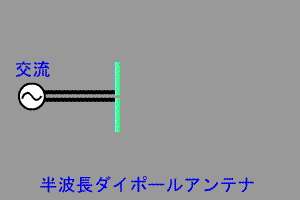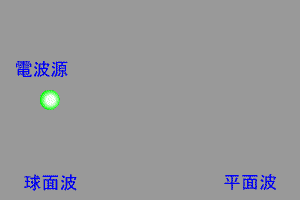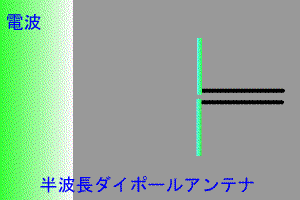

| The variation of the strength or direction of electric current generates the electromagnetic wave (or radio wave in usual case). The generated radio wave propagates at a speed of light in the vacuum. It may be absorbed or reflected by the ionized air or various materials. When the radio wave reaches an antenna, the electric current is induced in the antenna, and we can receive radio signals. |
 |
If an alternative current is sent in a transmission antenna, the charge distribution in the antenna deviates, and the variable electromagnetic field - radio wave - is produced around an electrified antenna. |
 |
In the vicinity of the source, the radio wave propagates in the spherically symmetric manner; the radio wave is a spherical wave. Far from the source, the radius of the spherical wave is so large that the wave front approximately becomes plane. |
 |
If the variable electromagnetic field - radio wave - reaches an antenna, the deviation of the charge distribution in the antenna is caused, and the induction current flows to detect the radio signal. |
 Go to Submenu
Go to Submenu Go to Menu
Go to Menu
自然科学書出版 裳華房 SHOKABO Co., Ltd.